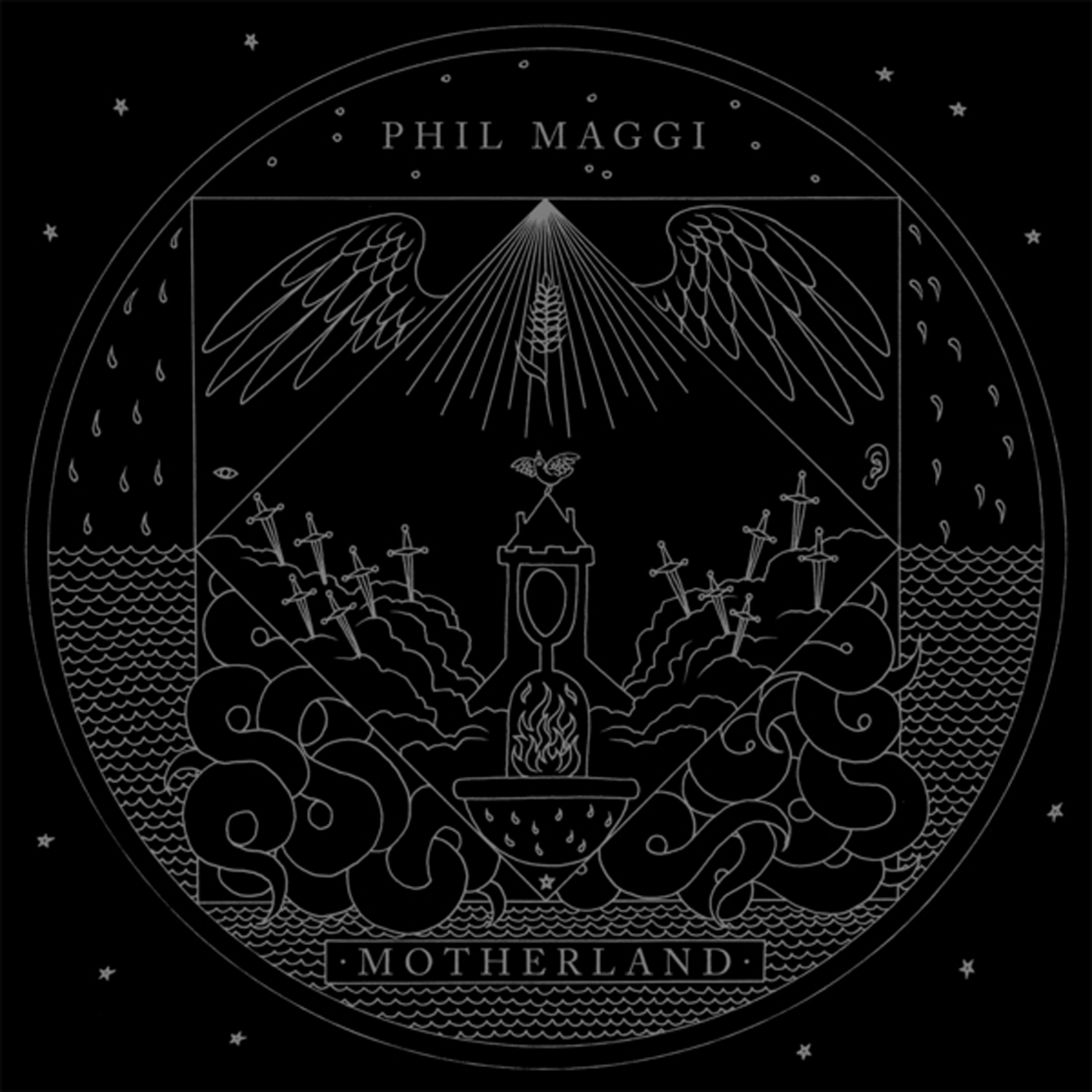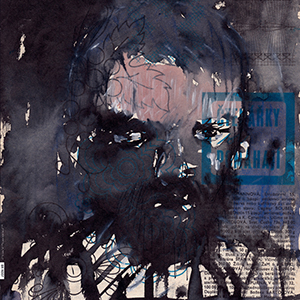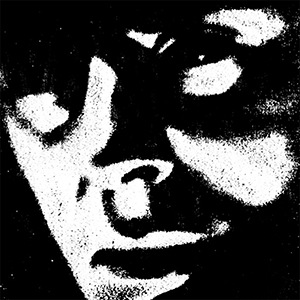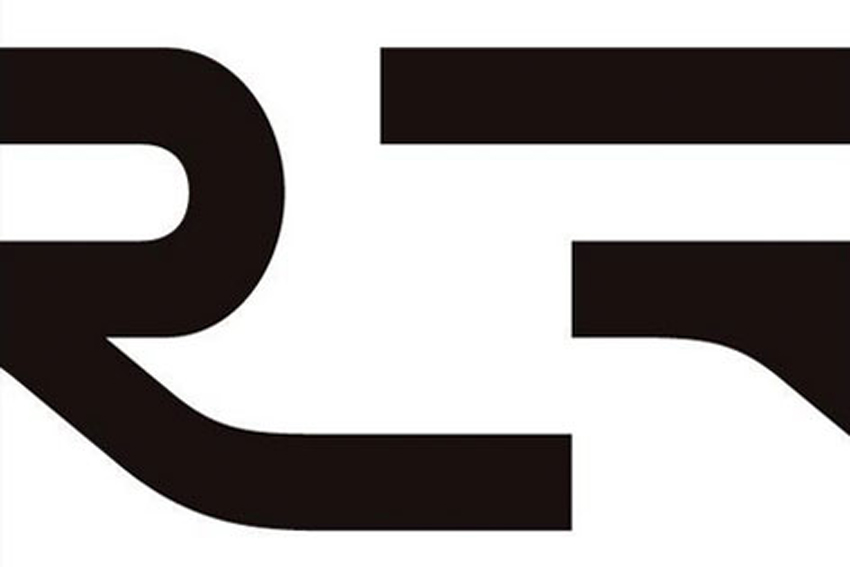 During their prime, Zoviet France pioneered a strain of music variously known as either ethno-ambient or sci-fi tribal, but they quickly moved on and nobody since has quite been able to quite fill the resultant void for me.  Others have certainly tried, but they usually have an "overwrought" or "overproduced" feel that dispels whatever illusion they are trying to evoke.  Consequently, I was absolutely delighted to find out about Phil Maggi and his eerie, mesmerizing, and loop-based sound collages.  Maggi's aesthetic is exactly what I was looking for, particularly on 2011's Ghost Love.  His similarly fine (if not even better) new album is a travelogue of sorts, culled from field recordings and snatches of traditional music accumulated during a 2011 trip through Umbria, Italy.
During their prime, Zoviet France pioneered a strain of music variously known as either ethno-ambient or sci-fi tribal, but they quickly moved on and nobody since has quite been able to quite fill the resultant void for me.  Others have certainly tried, but they usually have an "overwrought" or "overproduced" feel that dispels whatever illusion they are trying to evoke.  Consequently, I was absolutely delighted to find out about Phil Maggi and his eerie, mesmerizing, and loop-based sound collages.  Maggi's aesthetic is exactly what I was looking for, particularly on 2011's Ghost Love.  His similarly fine (if not even better) new album is a travelogue of sorts, culled from field recordings and snatches of traditional music accumulated during a 2011 trip through Umbria, Italy.
Two new shows just for you. We have squeezed out two extended release episodes for this weekend to get you through this week. They contain mostly new songs but there's also new issues from the vaults. The first show features music from Rider/Horse, Mint Field, Robert Aiki Aubrey Lowe, Anastasia Coope, ISAN, Stone Music, La Securite, Bark Psychosis, Jon Rose, Master Wilburn Burchette, Umberto, Wand, Tim Koh, Sun An, and Memory Drawings. The second episode has music by Laibach, Melt-Banana, Chuck Johnson, X, K. Yoshimatsu, Dorothy Carter, Pavel Milyakov, Violence Gratuite, Mark Templeton, Dummy, Endon, body / negative, Midwife, Alberto Boccardi, Divine. Cow in Maui from Veronika in Vienna. Get involved: subscribe, review, rate, share with your friends, send images! |



 I have been a fan of Piotrowicz’s electronic, usually modular synthesizer-centric work for a number of years now, and I have quite enjoyed following his evolution and development as an artist. With Samoobrona, however, I went in with some trepidation. Not because of my lack of faith in his work, but more the nature of the recording: a radio play exclusively in Polish. I was happy to find, however, that his electronics are still the primary element throughout the two side-long compositions and even without following the narrative, the result was enthralling.
I have been a fan of Piotrowicz’s electronic, usually modular synthesizer-centric work for a number of years now, and I have quite enjoyed following his evolution and development as an artist. With Samoobrona, however, I went in with some trepidation. Not because of my lack of faith in his work, but more the nature of the recording: a radio play exclusively in Polish. I was happy to find, however, that his electronics are still the primary element throughout the two side-long compositions and even without following the narrative, the result was enthralling. An artist working primarily with guitar used in abstract compositions, Jeff Barsky, also known as Insect Factory, does an exceptional job of carefully using effects and processing to create complex compositions, rather than chaotic walls of sound. On this solo cassette and older split LP, he avoids the temptation to simply run his instrument through a battery of guitar pedals on every song and instead uses that technique sparingly, along with less obscured, more conventional playing. It is his careful balance of texture and mood with conventional melodic playing that makes his work fascinating.
An artist working primarily with guitar used in abstract compositions, Jeff Barsky, also known as Insect Factory, does an exceptional job of carefully using effects and processing to create complex compositions, rather than chaotic walls of sound. On this solo cassette and older split LP, he avoids the temptation to simply run his instrument through a battery of guitar pedals on every song and instead uses that technique sparingly, along with less obscured, more conventional playing. It is his careful balance of texture and mood with conventional melodic playing that makes his work fascinating. Given how much I loved Cascade, my curiosity about this more ambitious companion album made for quite an impatient month of anticipation.  Unfortunately, now that The Deluge has finally arrived, I do not know quite what to make of it.  My initial gut feeling was that Basinski's added intervention diluted a piece that was already perfect and complete, but it has since grown on me quite a bit with repeated listens.  While I still feel that Cascade is the superior album, The Deluge mostly balances out its flaws with some higher highpoints than its predecessor.  Also, it will likely hold a lot of appeal for anyone who has always wanted to love William Basinski, but wished he were more dynamic (though I personally prefer him as just an invisible guiding presence).
Given how much I loved Cascade, my curiosity about this more ambitious companion album made for quite an impatient month of anticipation.  Unfortunately, now that The Deluge has finally arrived, I do not know quite what to make of it.  My initial gut feeling was that Basinski's added intervention diluted a piece that was already perfect and complete, but it has since grown on me quite a bit with repeated listens.  While I still feel that Cascade is the superior album, The Deluge mostly balances out its flaws with some higher highpoints than its predecessor.  Also, it will likely hold a lot of appeal for anyone who has always wanted to love William Basinski, but wished he were more dynamic (though I personally prefer him as just an invisible guiding presence). Haley Fohr's Thrill Jockey debut finds her again returning to the idiosyncratic singer-songwriter vein that first surfaced on 2013's Overdue.  There is a new twist though: Fohr is now backed by a full band of Chicago music scene luminaries in additional to returning collaborator Cooper Crain (of Bitchin Bajas).  The result is quite a strange, kaleidoscopic, and temporally dislocated one, drifting from inspired experimentalism to '70s-style folk-rock to something resembling Diamanda Galas fronting a Led Zeppelin cover band.  Personally, I vastly prefer her experimental side ("Dream of TV" is absolutely stellar), but there is no denying the singular power and otherness of Fohr's voice.
Haley Fohr's Thrill Jockey debut finds her again returning to the idiosyncratic singer-songwriter vein that first surfaced on 2013's Overdue.  There is a new twist though: Fohr is now backed by a full band of Chicago music scene luminaries in additional to returning collaborator Cooper Crain (of Bitchin Bajas).  The result is quite a strange, kaleidoscopic, and temporally dislocated one, drifting from inspired experimentalism to '70s-style folk-rock to something resembling Diamanda Galas fronting a Led Zeppelin cover band.  Personally, I vastly prefer her experimental side ("Dream of TV" is absolutely stellar), but there is no denying the singular power and otherness of Fohr's voice. I think I can safely guarantee that no one familiar with Ren Schofield’s work has ever wondered what a new Container album might sound like, nor have they likely exhausted much time wondering about what its title would be: LP is yet another dose of no-frills, bludgeoning, percussive, and noise-damaged anti-dance.  The only real change is Schofield has become a bit more skilled, a bit wilder, and a lot more aggressive since his last album.  Part of me admittedly misses the more "human"-speed, mid-tempo grooves of past Container albums, but LP is probably Ren’s best work in this vein by a landslide, as he has trimmed down his song lengths and dramatically ratcheted up his visceral intensity.  This is an absolutely bulldozing album.
I think I can safely guarantee that no one familiar with Ren Schofield’s work has ever wondered what a new Container album might sound like, nor have they likely exhausted much time wondering about what its title would be: LP is yet another dose of no-frills, bludgeoning, percussive, and noise-damaged anti-dance.  The only real change is Schofield has become a bit more skilled, a bit wilder, and a lot more aggressive since his last album.  Part of me admittedly misses the more "human"-speed, mid-tempo grooves of past Container albums, but LP is probably Ren’s best work in this vein by a landslide, as he has trimmed down his song lengths and dramatically ratcheted up his visceral intensity.  This is an absolutely bulldozing album. Ramiro Jeancarlo's solo project has only been active for a few years, but with these releases the Miami artist has refined his own insular version of electronic music with the assistance of a sprawling vintage synth collection. This album captures his two primary styles: weird electronic experiments and catchy, song-like pop outings. Even though the overall feel may be different, Jeancarlo manages to tie them together to result in a diverse, yet unified sounding album.
Ramiro Jeancarlo's solo project has only been active for a few years, but with these releases the Miami artist has refined his own insular version of electronic music with the assistance of a sprawling vintage synth collection. This album captures his two primary styles: weird electronic experiments and catchy, song-like pop outings. Even though the overall feel may be different, Jeancarlo manages to tie them together to result in a diverse, yet unified sounding album. Florida is not known for hosting a secret enclave of synth bands, but this split cassette tape indicates that there are at least a few projects hiding amongst the tourist traps and meth labs. Burnt Hair and Ars Phoenix both work with similar instrumentation but the final product differ drastically between the two. The latter makes for catchy, if a bit bleak, pop songs while the former is depressive, bedroom electronics, resulting in a wonderful combination of similarities and differences.
Florida is not known for hosting a secret enclave of synth bands, but this split cassette tape indicates that there are at least a few projects hiding amongst the tourist traps and meth labs. Burnt Hair and Ars Phoenix both work with similar instrumentation but the final product differ drastically between the two. The latter makes for catchy, if a bit bleak, pop songs while the former is depressive, bedroom electronics, resulting in a wonderful combination of similarities and differences. Andrew Hock has carved out a niche for himself as a guitarist for bands including Psalm Zero and the recently deceased Castevet, but this makes for his first truly solo release. Crystalline Privative Opulence, featuring additional wind instrumentation by Jeremiah Cymerman and Davindar Singh, showcases his skill with a guitar as well as electronics but more so his sense of composition amongst these two side-long songs.
Andrew Hock has carved out a niche for himself as a guitarist for bands including Psalm Zero and the recently deceased Castevet, but this makes for his first truly solo release. Crystalline Privative Opulence, featuring additional wind instrumentation by Jeremiah Cymerman and Davindar Singh, showcases his skill with a guitar as well as electronics but more so his sense of composition amongst these two side-long songs. While they differ quite a bit in scope, concept, and volume, Carsten Nicolai's Xerrox series is a long-running and intriguing digital parallel to William Basinski's analog experiments in tape decay, taking samples and using custom software to make copy upon copy until the original sounds are deteriorated into unrecognizability.  The theme for this particular volume is "towards space," which leaves the earthbound inspirations of the first two volumes far behind for a nostalgia-soaked fantasia on the science-fiction films and shows that Carsten fondly remembers from his childhood.  Unsurprisingly, that results in an album that sounds an awful lot like a soundtrack, but it is an unexpectedly poignant and curiously neo-classical one.
While they differ quite a bit in scope, concept, and volume, Carsten Nicolai's Xerrox series is a long-running and intriguing digital parallel to William Basinski's analog experiments in tape decay, taking samples and using custom software to make copy upon copy until the original sounds are deteriorated into unrecognizability.  The theme for this particular volume is "towards space," which leaves the earthbound inspirations of the first two volumes far behind for a nostalgia-soaked fantasia on the science-fiction films and shows that Carsten fondly remembers from his childhood.  Unsurprisingly, that results in an album that sounds an awful lot like a soundtrack, but it is an unexpectedly poignant and curiously neo-classical one.
